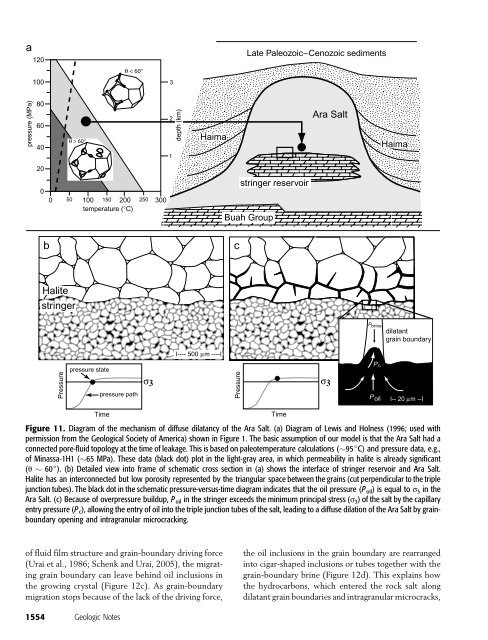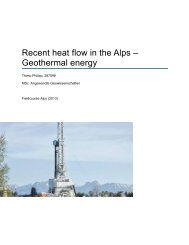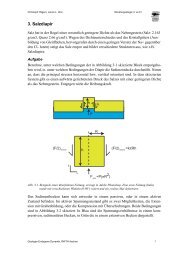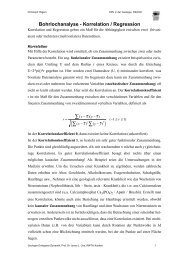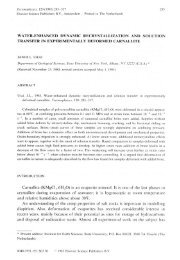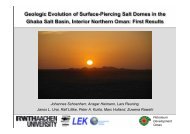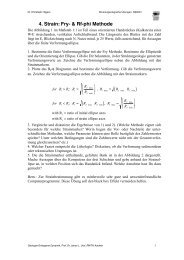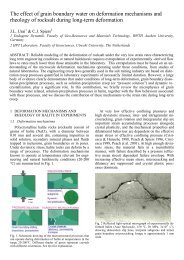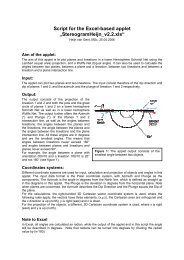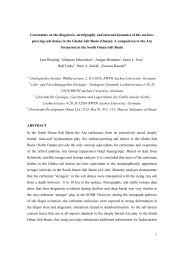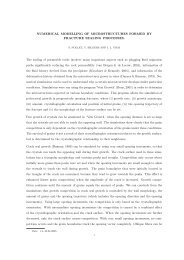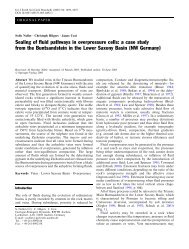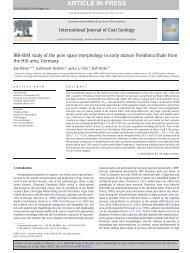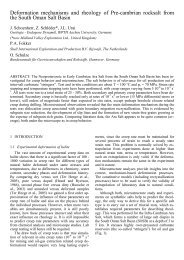Paper - RWTH Aachen University
Paper - RWTH Aachen University
Paper - RWTH Aachen University
Create successful ePaper yourself
Turn your PDF publications into a flip-book with our unique Google optimized e-Paper software.
Figure 11. Diagram of the mechanism of diffuse dilatancy of the Ara Salt. (a) Diagram of Lewis and Holness (1996; used with<br />
permission from the Geological Society of America) shown in Figure 1. The basic assumption of our model is that the Ara Salt had a<br />
connected pore-fluid topology at the time of leakage. This is based on paleotemperature calculations ( 95jC) and pressure data, e.g.,<br />
of Minassa-1H1 ( 65 MPa). These data (black dot) plot in the light-gray area, in which permeability in halite is already significant<br />
(u 60j). (b) Detailed view into frame of schematic cross section in (a) shows the interface of stringer reservoir and Ara Salt.<br />
Halite has an interconnected but low porosity represented by the triangular space between the grains (cut perpendicular to the triple<br />
junction tubes). The black dot in the schematic pressure-versus-time diagram indicates that the oil pressure (P oil) is equal to s3 in the<br />
Ara Salt. (c) Because of overpressure buildup, P oil in the stringer exceeds the minimum principal stress (s3) of the salt by the capillary<br />
entry pressure (P c), allowing the entry of oil into the triple junction tubes of the salt, leading to a diffuse dilation of the Ara Salt by grainboundary<br />
opening and intragranular microcracking.<br />
of fluid film structure and grain-boundary driving force<br />
(Urai et al., 1986; Schenk and Urai, 2005), the migrating<br />
grain boundary can leave behind oil inclusions in<br />
the growing crystal (Figure 12c). As grain-boundary<br />
migration stops because of the lack of the driving force,<br />
1554 Geologic Notes<br />
the oil inclusions in the grain boundary are rearranged<br />
into cigar-shaped inclusions or tubes together with the<br />
grain-boundary brine (Figure 12d). This explains how<br />
the hydrocarbons, which entered the rock salt along<br />
dilatant grain boundaries and intragranular microcracks,


